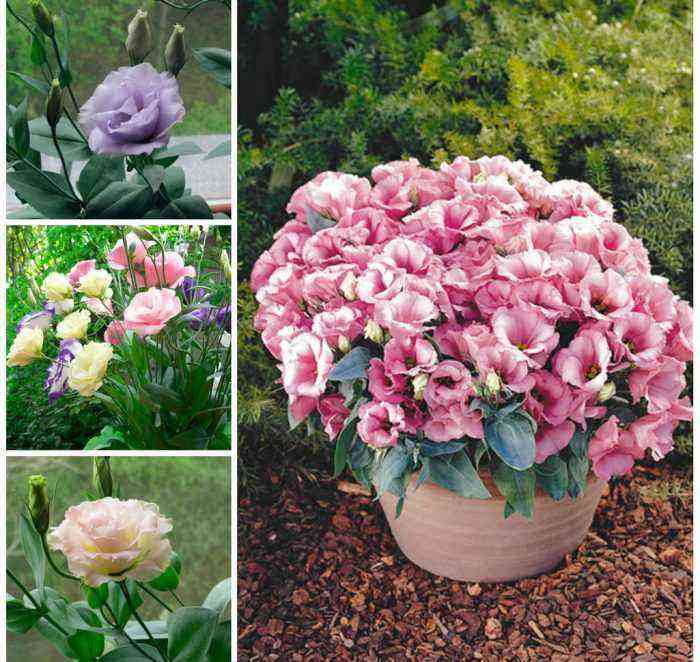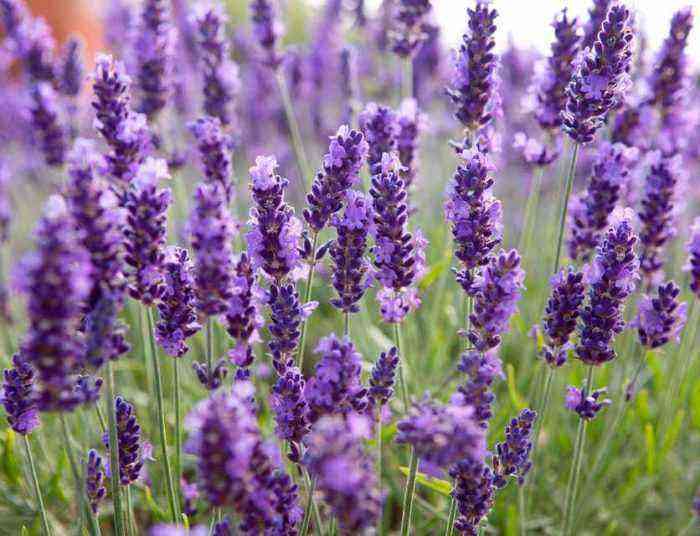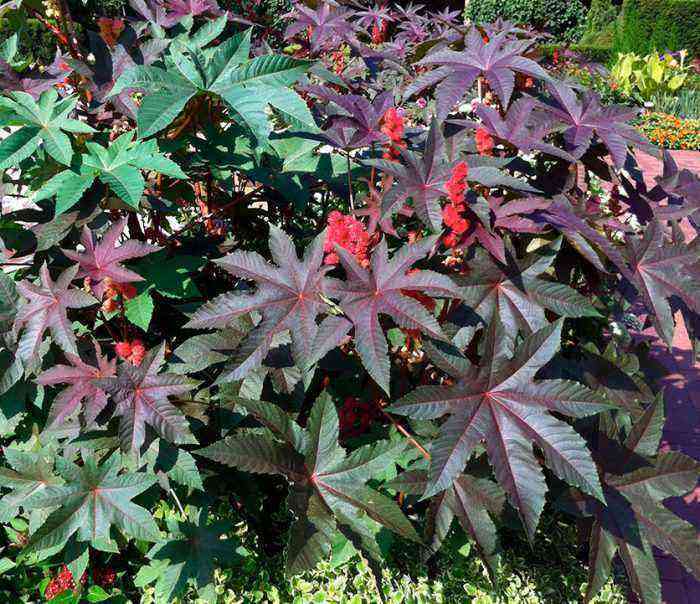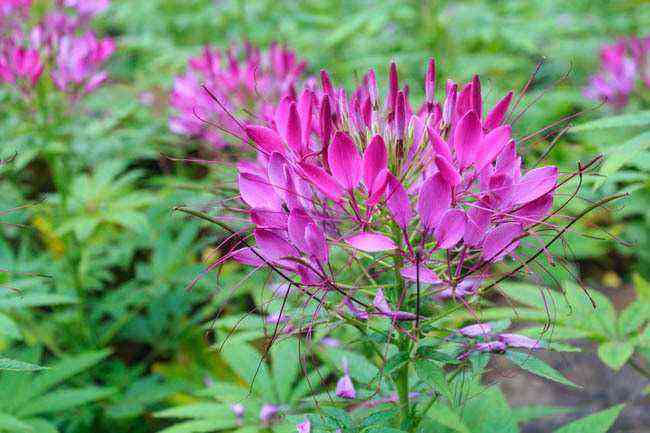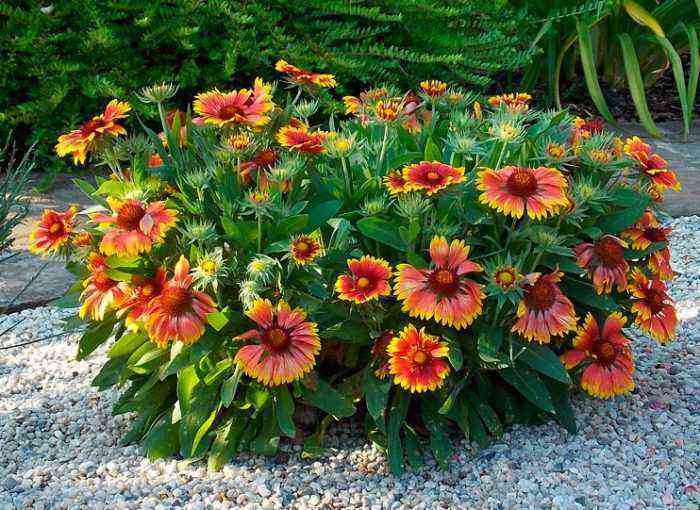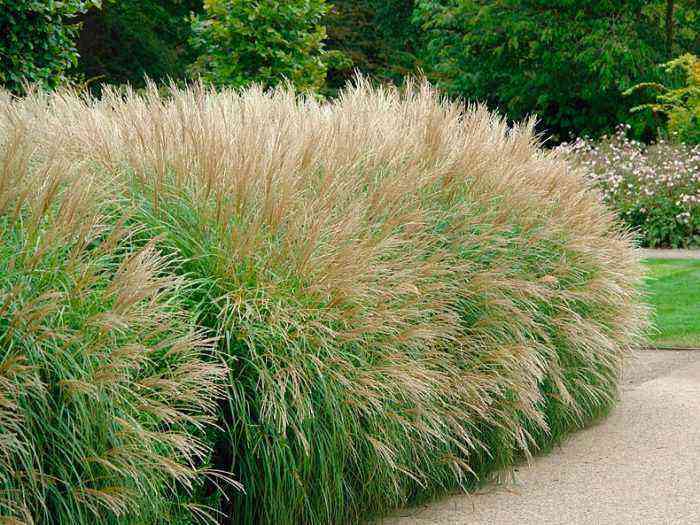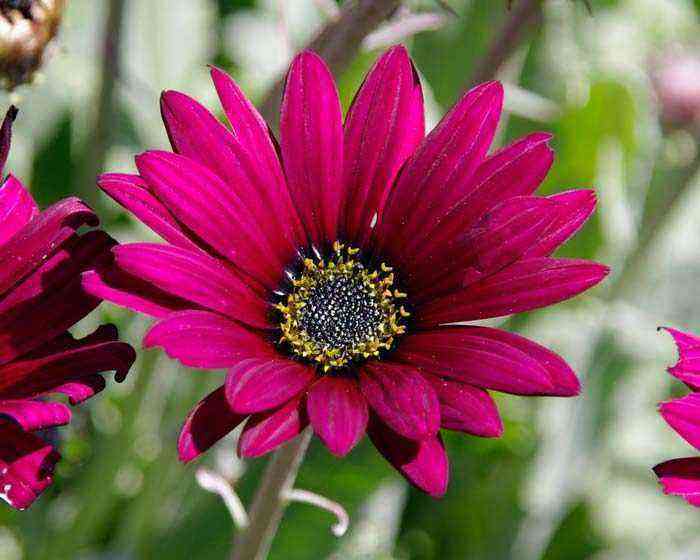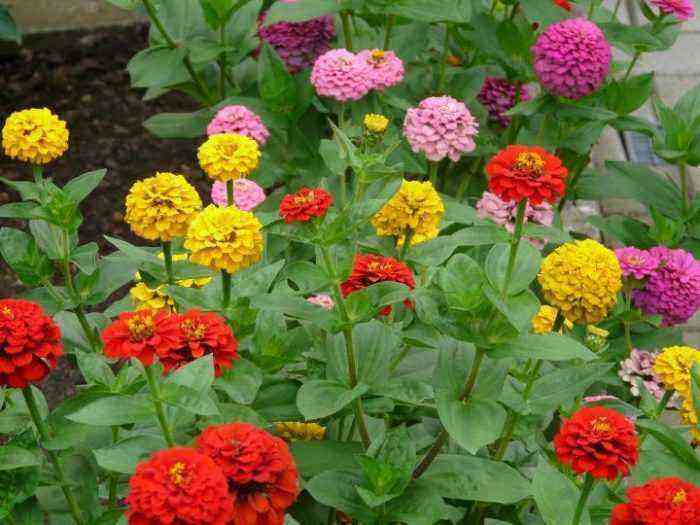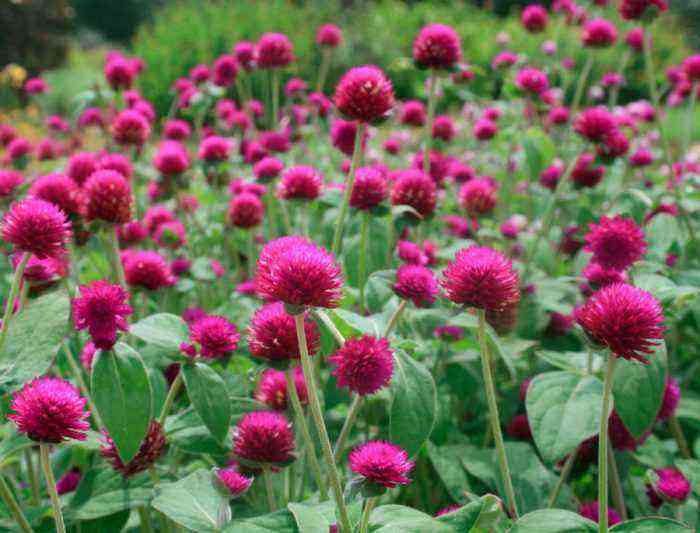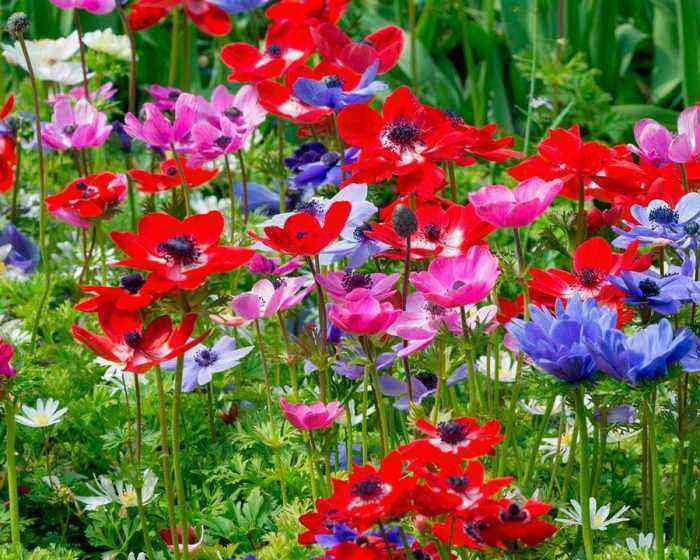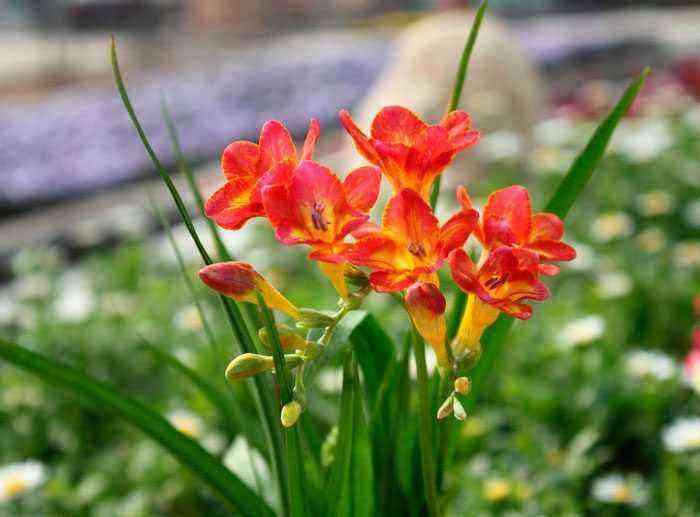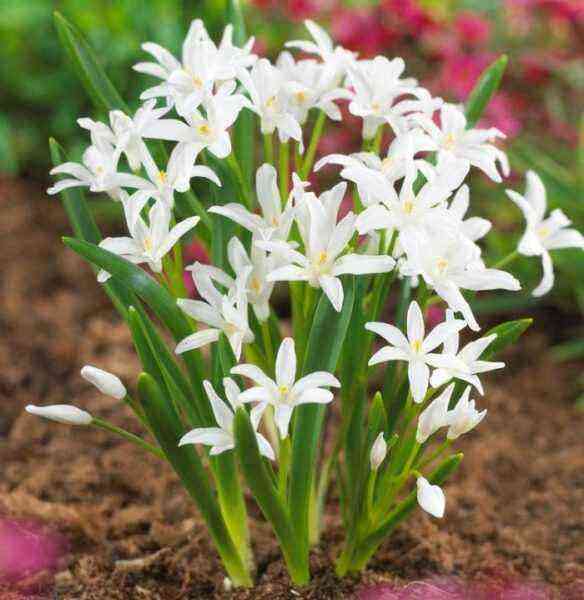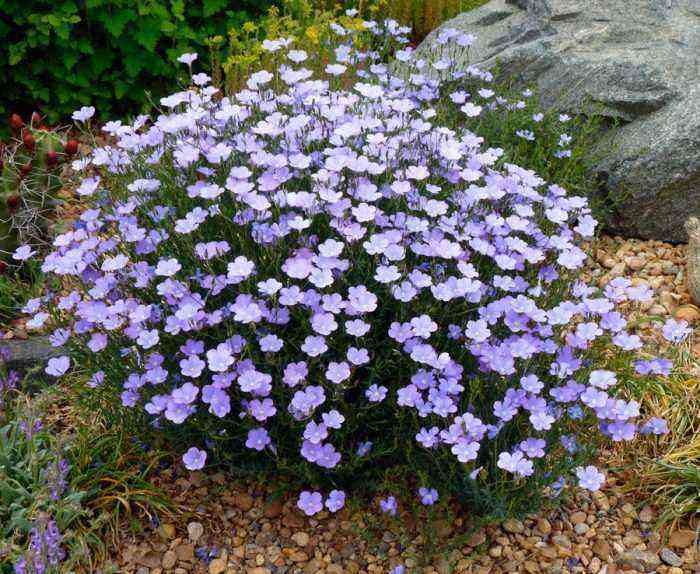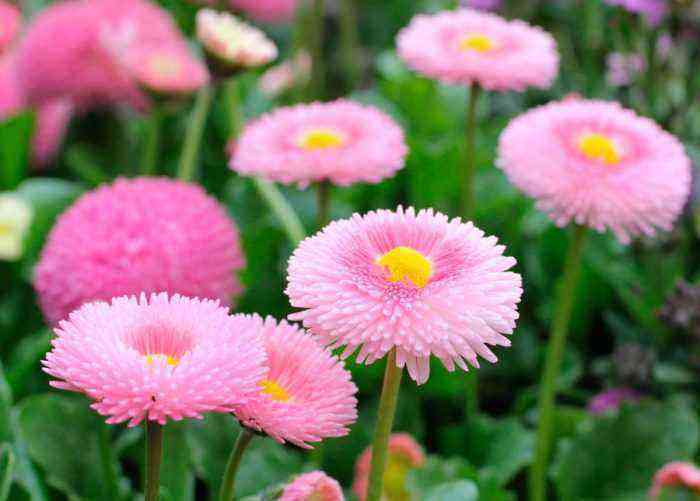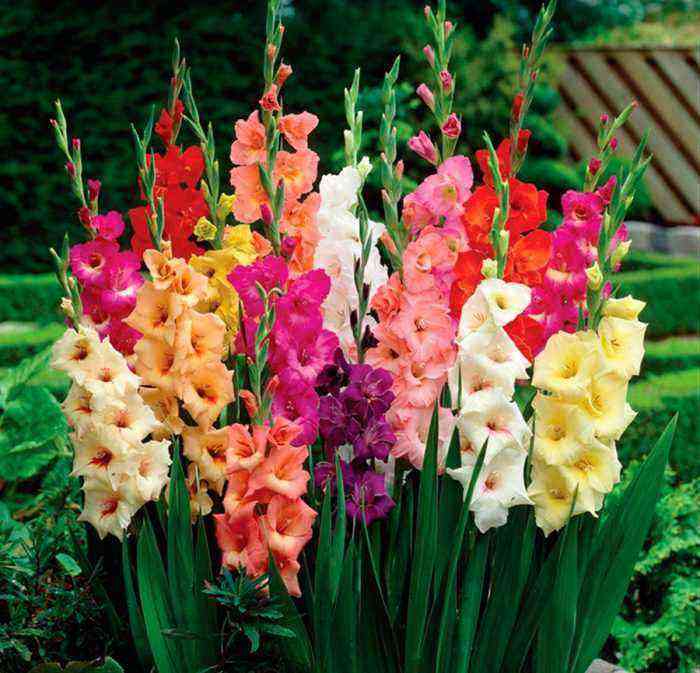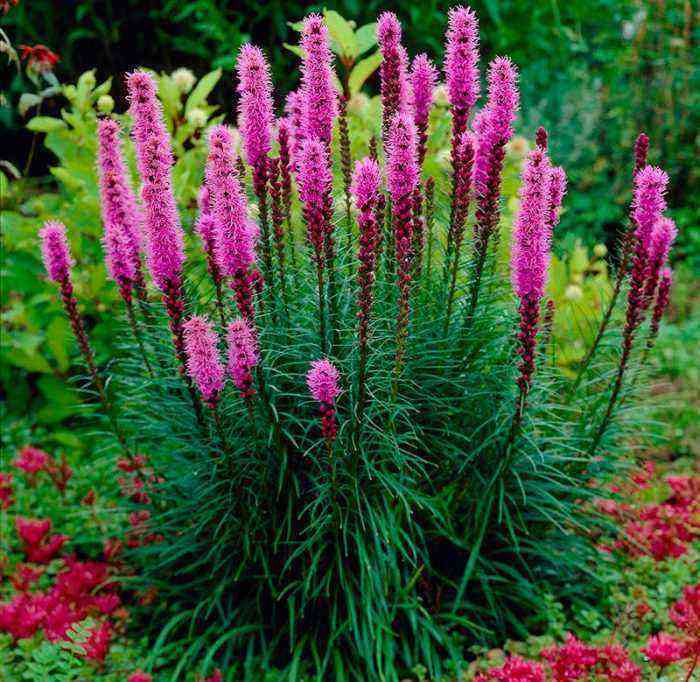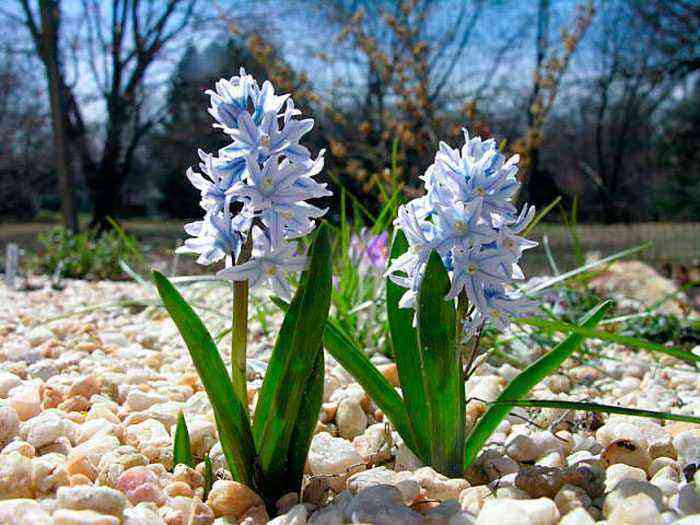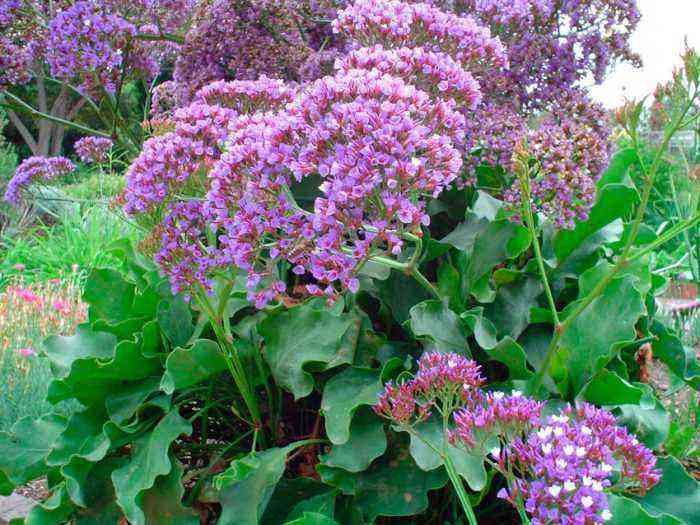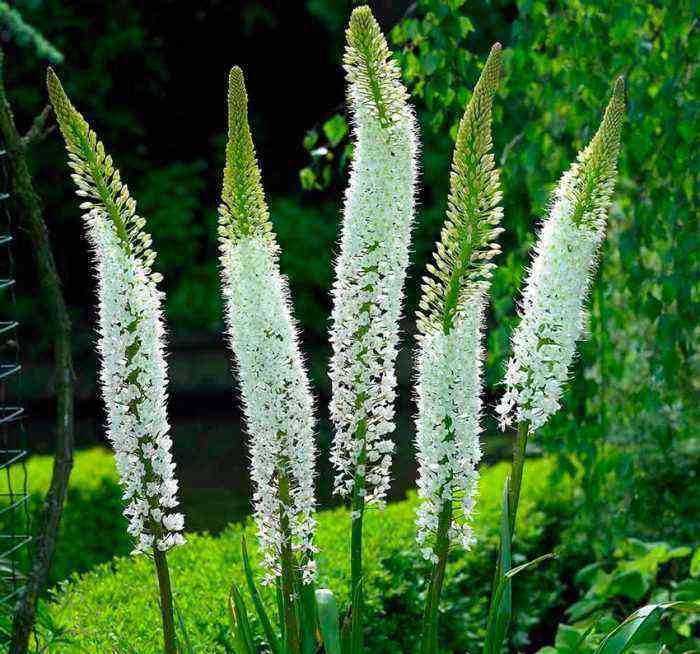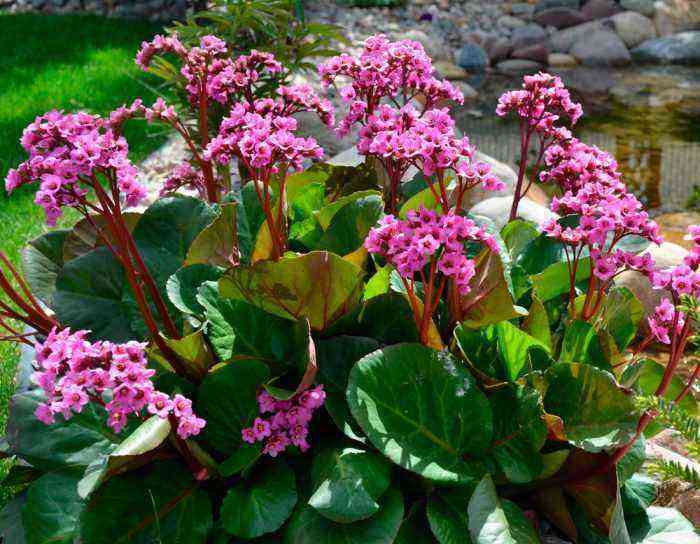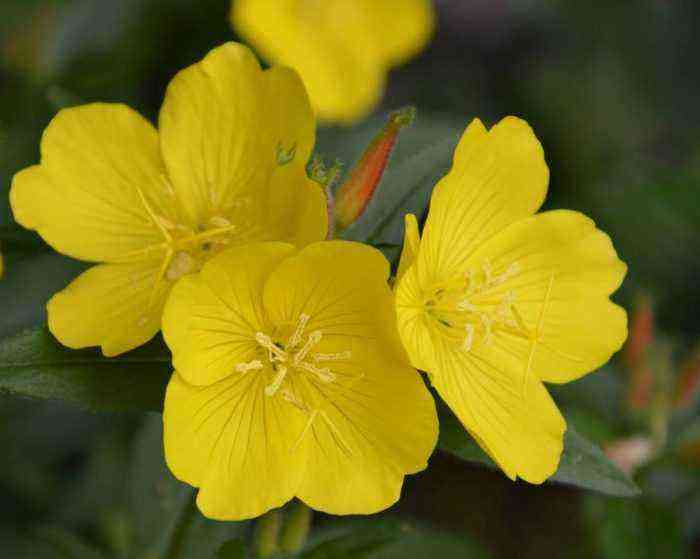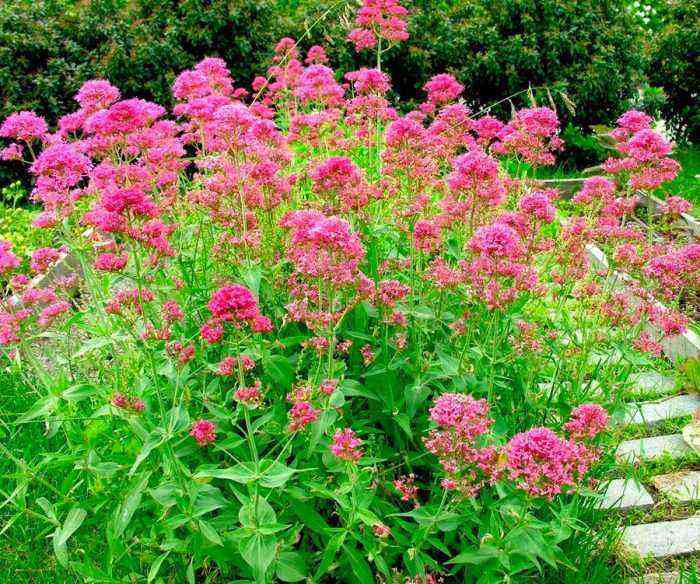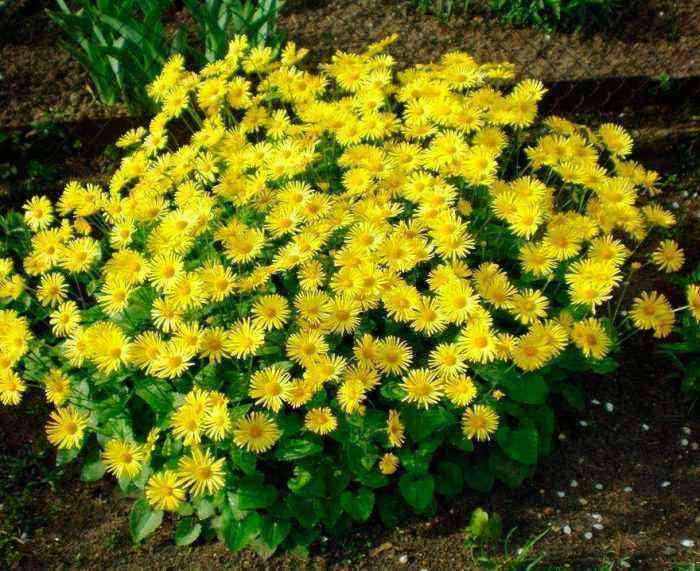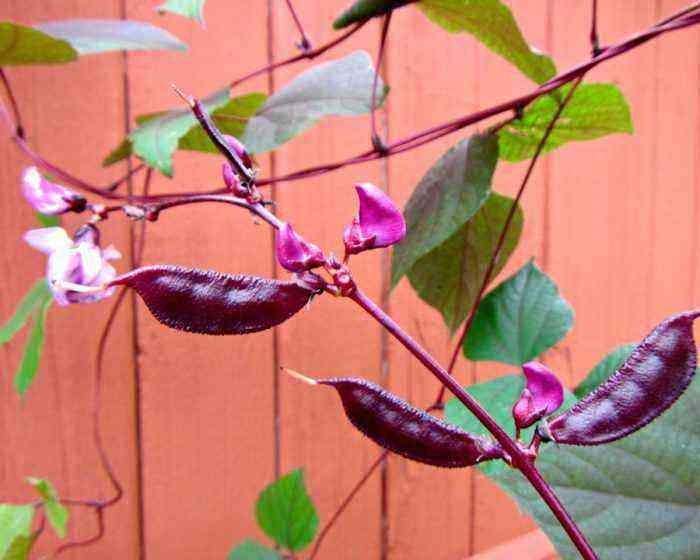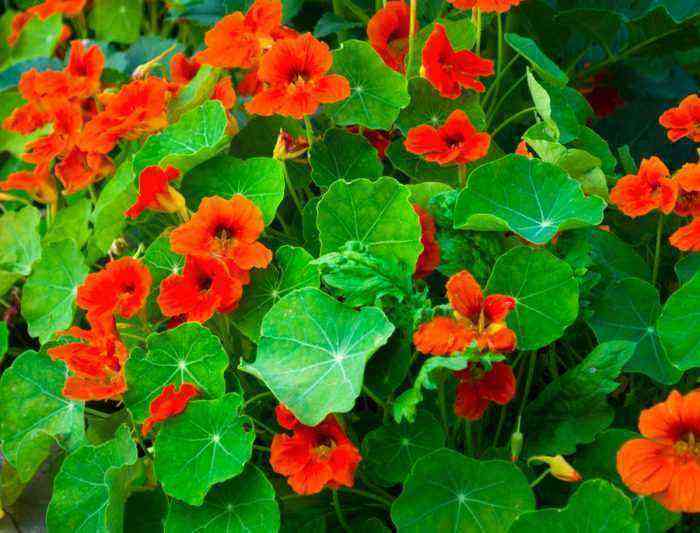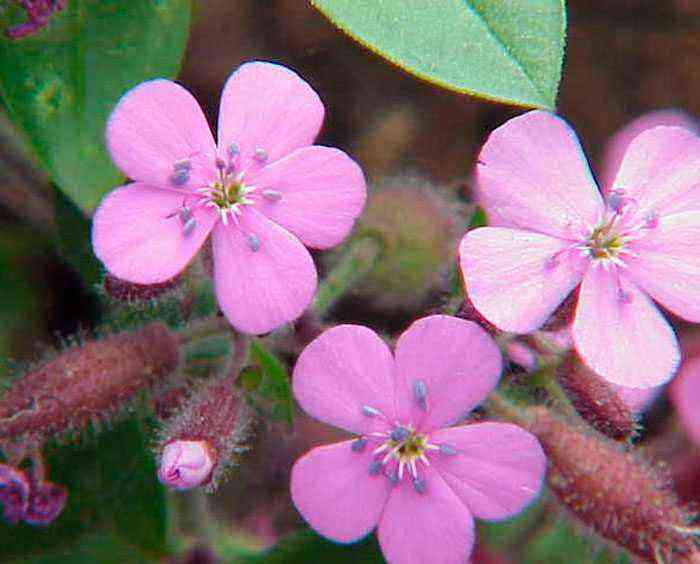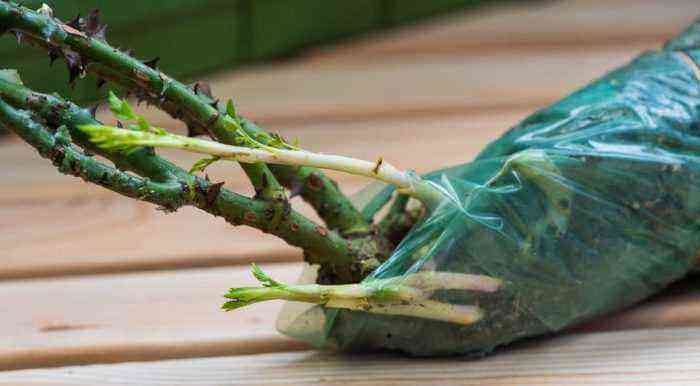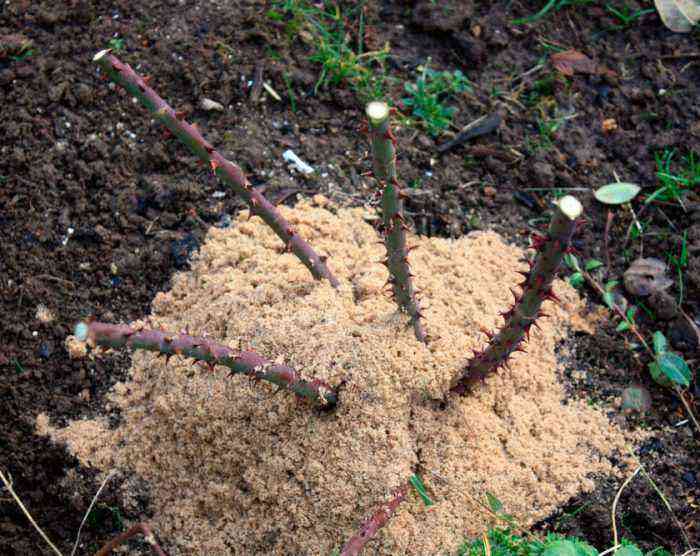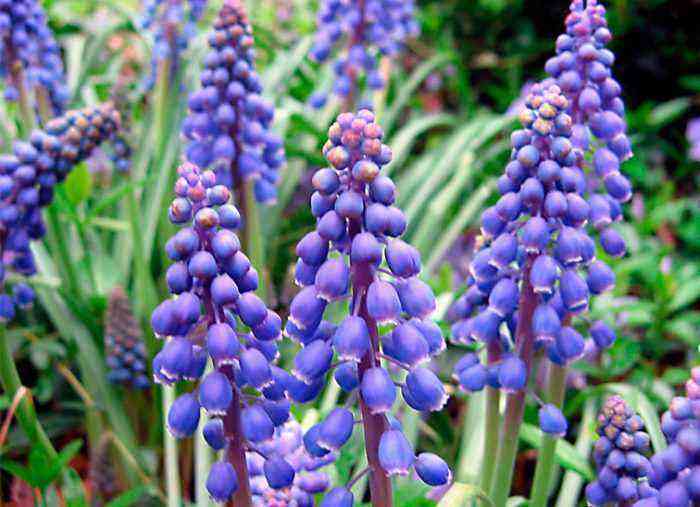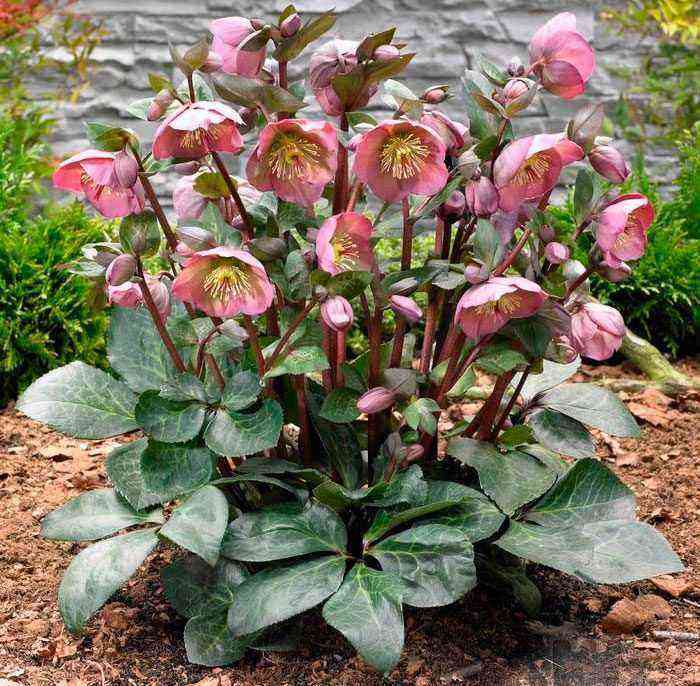The flowering plant hibiscus (Hibiscus) is a member of the Malvaceae family. This genus unites about 300 species, among which there are shrubs, evergreen and deciduous trees, as well as herbaceous plants. In natural conditions, they can be found in the tropical and subtropical regions of the Old and New Worlds. In open ground in regions with a temperate climate, only trifoliate and Syrian hibiscus are cultivated, as well as garden hibiscus (hybrid hibiscus), which was bred by breeders in the forties and fifties of the twentieth century on the basis of North American hibiscus: bright red, marsh and armed. All forms of garden hibiscus are highly resistant to frost. The widely known Chinese hibiscus (Chinese rose) in mid-latitudes is cultivated only in greenhouses or at home, but in the summer it is advisable to transfer it to fresh air.
Brief description of cultivation


- Landing… In spring, from mid to late May.
- Flowering… From the last days of June to early October.
- Illumination. Sunny areas are suitable.
- Ground… The soil should be nutritious, light and water permeable. Hibiscus can be grown in areas where the rose grows well.
- Watering… It is necessary to water systematically, especially on hot days, but they do this only when the soil is dry. In the dry season, watering is carried out every day.
- Trimming… In early spring, before sap flow begins, rejuvenating, sanitary and formative pruning is carried out.
- Fertilizer… You need to feed hibiscus from June to September 1 time in 2 weeks, for this, mineral fertilizers with a high content of nitrogen and phosphorus are used. In the autumn, potash fertilizer should also be added to the complex.
- Reproduction… By cuttings, grafting, layering and seed method.
- Harmful insects… Thrips, spider mites, aphids and whiteflies.
- disease… Root rot and chlorosis.
Features of garden hibiscus
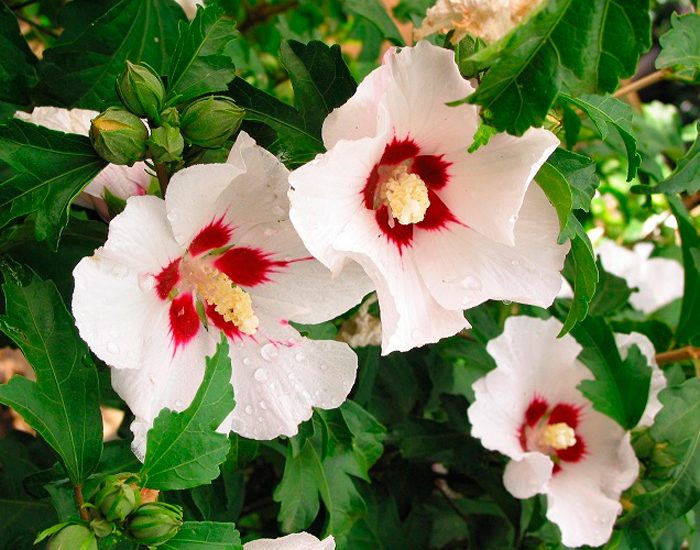

Garden hibiscus is represented by shrubs, trees and herbaceous plants. For example, tree hibiscus (Syrian rose) is cultivated in the garden as a standard tree or shrub, the height of which can reach up to 150 cm.All herbaceous hibiscus are varieties of hybrid hibiscus, among them there are annuals, but perennials are the most popular among gardeners. Despite the fact that there are many different forms of such a plant, they all have common features. Petiole leaf plates are incised to a greater or lesser extent. Large saturated color flowers can be simple or double. They can be painted in different colors, for example: yellow, dark red, cyan, purple, white, crimson, lilac or violet. There are varieties with an eye in a contrasting color or with edging along the edge of the petals. The fruit is a five-leaf box containing seeds. Today, in addition to garden species, there are about 500 varieties and forms of hibiscus.
Planting hibiscus outdoors
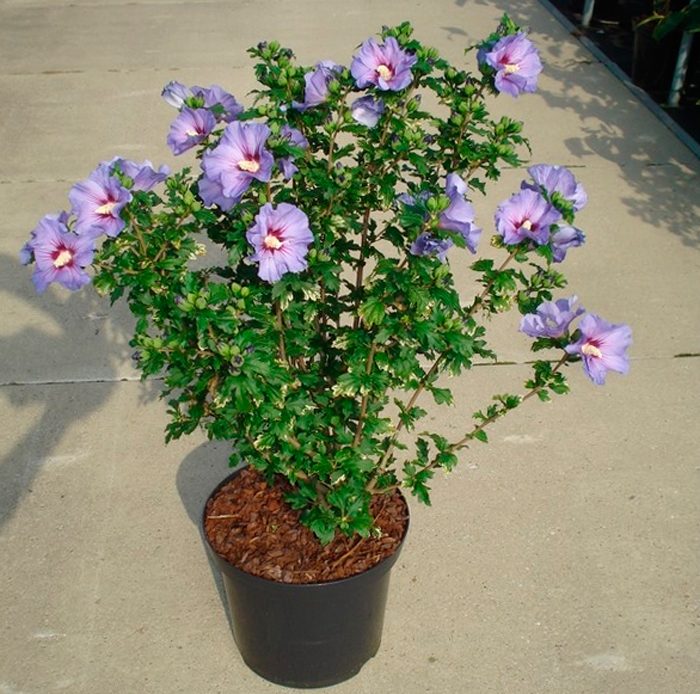

What time to plant
Before you start planting hibiscus, you need to choose the most suitable place for this. From this, as well as how well you take care of the plant, depends on how long it will decorate your garden. If everything is done correctly, then the bush in the same place can grow for about 20 years.
Planting hibiscus seedlings in open ground is carried out in the spring, after the spring return frosts are left behind. In this case, during the summer, the bush will be able to take root well and acclimatize in a new place. It is best to choose a well-lit place for planting crops that is reliably protected from the wind. The soil should be light, rich in nutrients and well-drained, roses still grow well in such soil. If desired, hibiscus can even be planted among the roses.
Landing rule


For tree-shaped planting, the planting hole should be 2 times larger than the volume of the seedling root system. After the pit is ready, a layer of drainage from pieces of brick should be laid on its bottom, its thickness should be about 15 centimeters. From above it is covered with a layer of sand 10 centimeters thick, then a fifteen centimeter layer of compost and again a ten centimeter layer of sand. To fill up the planting hole, you will need a soil mixture; for its preparation, the soil pulled from the hole, sand and peat are combined in a ratio of 2: 1: 4. Carefully place the seedling in the hole, with the root collar only slightly submerged in the soil. Then the pit is covered with soil mixture that you prepared in advance.
After the tree is planted, it must be well spud, as a result, a rather deep hole for water should be formed around it. Pour water into this recess and wait until it is completely absorbed into the soil. Then fill the hole with soil so that the trunk circle is even and level with the surface of the site.
If you need to plant a seedling in open ground in the autumn, then the surface of the trunk circle should be covered with a layer of mulch, and the plant itself should be tied with spruce branches.
Hibiscus care


Garden hibiscus grown in open soil is not difficult to care for. After young green stems appear on the bush, all dried old shoots are cut off from it. Systematically loosen the soil around the tree, pull up weeds in a timely manner, and also prevent the bush from thickening.
Fertilizer
During the growing season (June – September), the plant is regularly fed once every 1 weeks, for this, a fertilizer with an increased content of phosphorus and nitrogen is used. And in the autumn, during the preparation of the bush for wintering, in addition to phosphorus fertilizers, it is also fed with potash fertilizers.
After the flower has bloomed, it will live for only 24 hours, and then it will wither. However, if the bush is well cared for, it will bloom very luxuriantly, and immediately after one flower withers, another will bloom. In order for the bush to always be neat, it is necessary to regularly pick off the flowers that have begun to fade.
Watering
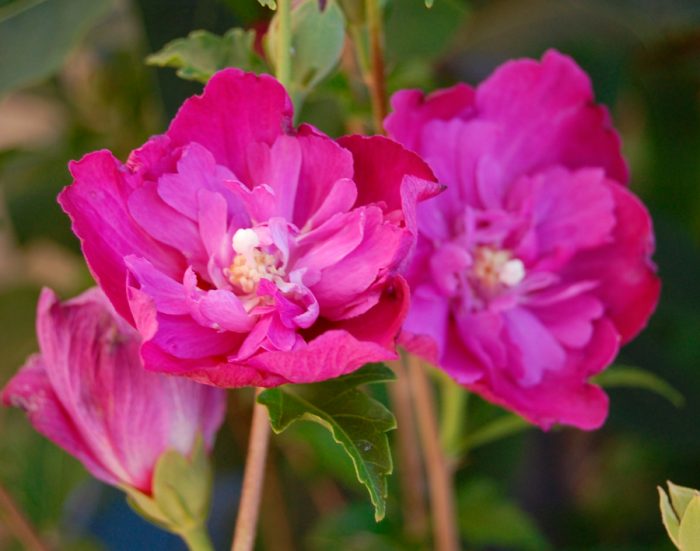

In order for a flower to grow and develop normally, it must be watered in a timely manner, special attention is paid to this in hot weather. However, watering is carried out only when the soil surface near the bush is completely dry. In the event that there is a prolonged dry period, watering the hibiscus is carried out every day.
Pruning hibiscus
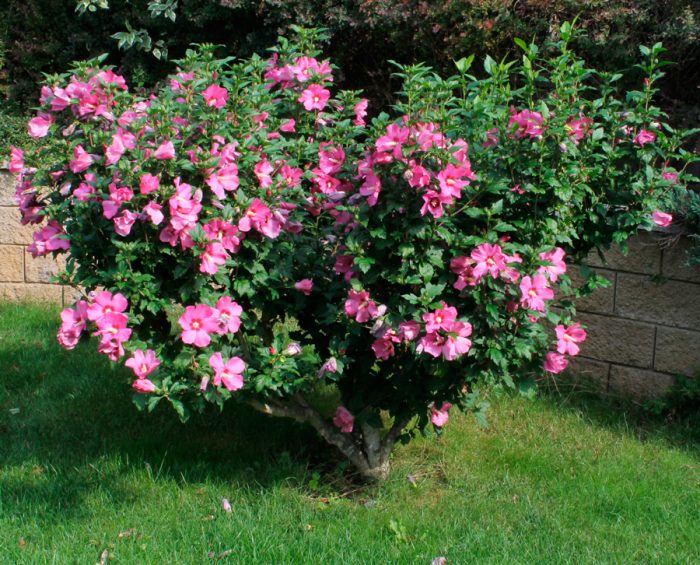

The culture needs sanitary, as well as formative pruning, with which you can give the desired shape to the bush. Most often it is shaped like a tree, but this will take a lot of time and patience. In a newly planted young bush, the branches are shortened to 2 or 3 buds, while a well-developed trunk does not need to be touched. In subsequent years, in the last winter weeks, trim the lateral shoots to 1–2 buds, and the stem to 5–6 buds. After the height of the stem suits you, start forming the crown of the plant; for this, the strong shoots are shortened by several buds. Cut out all the undergrowth and trim off the top of the stem.
In the first spring weeks, before the sap flow begins, sanitary pruning of hibiscus is carried out. To do this, cut out all affected by the disease, old, growing inside the bush and weak shoots, then shorten last year’s growth by 1/3 part, this helps to stimulate the laying of new flower buds. The main rule in pruning hibiscus, the more the bush is trimmed, the more young shoots it will grow, and this will lead to more lush flowering.
If you need to rejuvenate the plant, then for this, all the dried old branches are cut off from it, and the remaining stems inside the bush are shortened by 2/3. In order to make the shape of the bush more attractive, it is recommended to cut the branches around the main stem to different heights.
Hibiscus transplant
Sometimes it happens that an adult hibiscus bush has to be transplanted to a new place. This is done in early spring after all the shoots have been shortened by ½ part and always before the bush blooms. The transplant is carried out in the same way as the landing (see above).
After the plant is transplanted, it is well watered. In the future, he is looked after in the same way as other adult hibiscus. A year later, flowers will appear on the bush. When transplanting a hybrid hibiscus, you can divide the rhizome if desired.
Reproduction of garden hibiscus


Even a novice gardener can propagate garden hibiscus, since there is nothing difficult about it. Syrian hibiscus (garden) is most often propagated by seed and cuttings, but it can also be done by grafting and layering. Hybrid hibiscus can be propagated by grafting, dividing the bush, and even green cuttings.
Cultivation from seeds


Sowing hibiscus seeds is carried out in January – March. Before starting sowing, the seed is poured with a solution of dark pink potassium permanganate for 30 minutes. Then they are taken out and immersed in Epin’s solution for 24 hours so that the seeds are only slightly covered with it. Then the seeds are sown. For this, a container is used, which is filled with a soil mixture consisting of sand and peat. From above it is covered with glass and removed to a warm place (from 25 to 27 degrees). If possible, arrange bottom heating for crops. They will also need systematic ventilation and removal of condensate from the shelter. Watering is carried out as needed.
After the seedlings have formed the first true leaf plates, they will need to be cut into individual pots. Make sure that the plant does not stretch out. This can happen due to excessively poor lighting, so it is recommended that the seedlings arrange additional lighting.
Planting seedlings in open soil is carried out in mid-May. Powerful bushes are immediately planted in a permanent place. The same seedlings, which are very weak, are recommended to be planted on a training bed for growing, while the distance between the bushes should be at least 50 cm. Unlike hybrid hibiscus, garden hibiscus can reproduce by self-seeding.
Propagation of hibiscus by cuttings
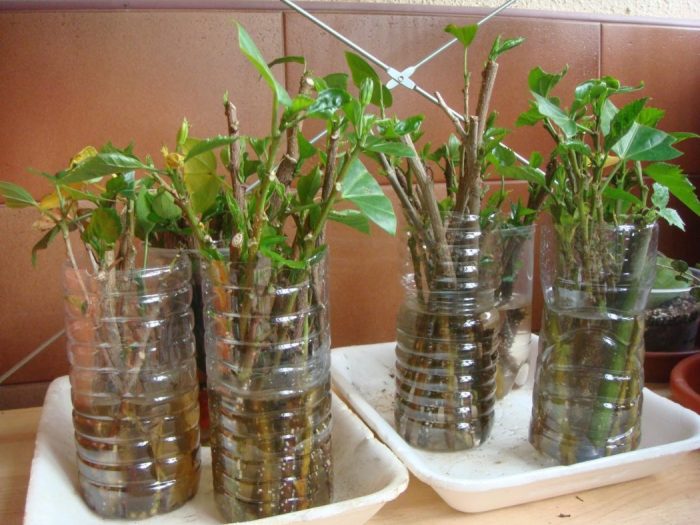

Cuttings are harvested in the summer. To do this, cut off the shoot with 2-3 internodes. Treat the bottom sections of the lengths with a growth promoter. After that, they are planted in a peat soil mixture in a greenhouse for rooting, they need bottom heating. After 4 weeks, roots should grow on the cuttings, after which they are transplanted into separate containers, which are filled with a soil mixture consisting of peat, sand, turf and leafy soil (1: 1: 1: 1). Water the bushes systematically, and after they have grown young shoots, pinch them, which stimulates tillering.
After the bush grows up and gets stronger, it can be planted in the garden. With proper and good care, hibiscus will begin to bloom in the first year after planting it in open soil. Some gardeners manage to root cuttings in a container of water.
Hibiscus pests and diseases
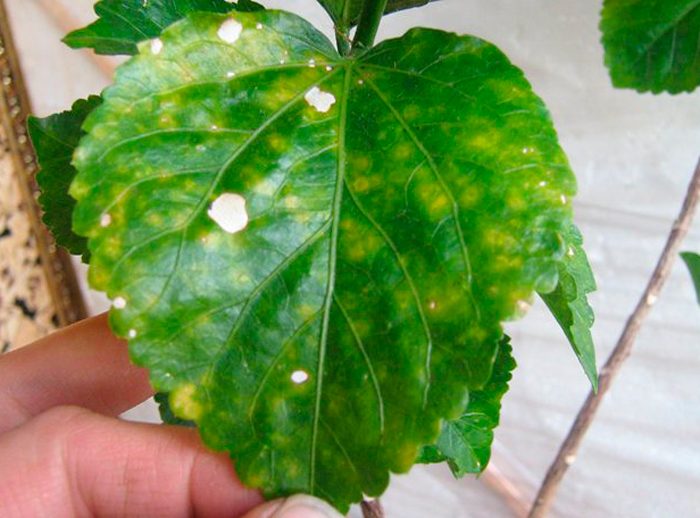

vermin
Hibiscus is quite resistant to pests and diseases. However, if during a prolonged drought it is not watered for a long time, then aphids, spider mites, thrips and whiteflies can settle on it. In order to get rid of harmful insects, you will need to spray the bushes with a solution of an insecticidal preparation 2 times with an interval of 7-10 days, for example: Fitoverma, Karbofos, Actellika or Inta-vira.
disease
Outdoor hibiscus is most commonly affected by chlorosis. In a diseased bush, the lower leaf plates fly around, while young leaves grow immediately of a pale yellow hue. This can happen due to the fact that the soil contains very little iron and nitrogen, therefore it is recommended to add iron chelate to the water during irrigation. At the same time, in the spring, it is imperative to apply a complex mineral fertilizer to the soil, which includes nitrogen.
Possible problems
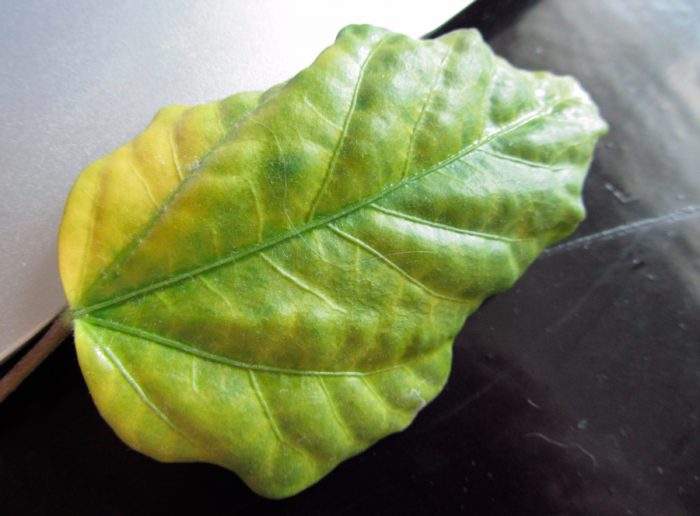

- Hibiscus turns yellow… In hibiscus, the leaves can turn yellow if its root system was injured during transplantation, and also due to chlorosis. If the yellowing of the foliage is associated with injury to the root system, then during watering, you need to add Kornevin or Zircon to the water, while you must follow the instructions attached to the preparation, and the product is also poured into the water used to moisten the leaf plates (1 drops per 6 liter of water ). Also, yellowing of foliage can be associated with insufficient watering during a prolonged drought.
- Hibiscus does not bloom… In the event that a spacious, well-lit area was chosen for planting a bush, and the gardener takes care of it correctly and observes all the rules of agricultural technology, but still does not appear on it, then this may be due to the fact that there are very few in the soil boron and phosphorus. And if, in addition to the lack of flowering, the stems also grow very slowly, then the bush still lacks nitrogen. If you feed the hibiscus correctly and in a timely manner, then it will certainly bloom.
- Hibiscus leaves fall… Flying leaves in autumn is a completely natural process, and you should not worry about it. However, if the foliage began to fall off ahead of schedule, then this may be due to the fact that the root system is damaged or due to improper watering (both excessive and insufficient). How to fix the situation is described in detail above.
Hibiscus after flowering
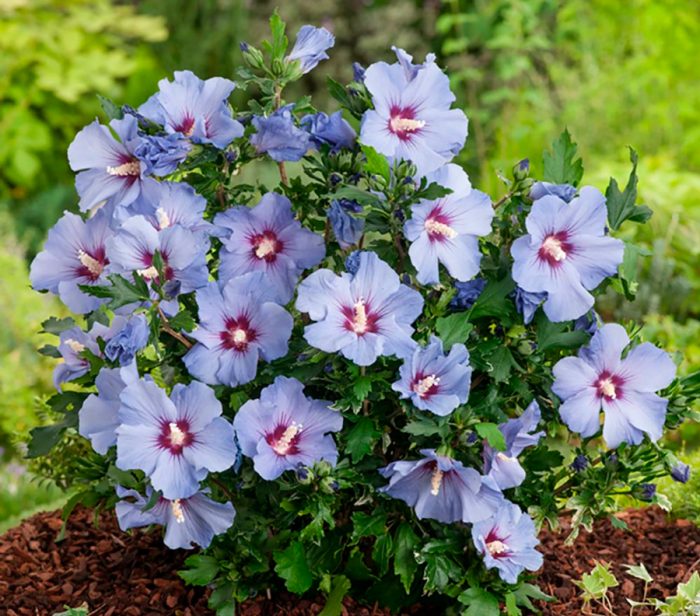

Features of care in the fall
Perennial hybrid hibiscus are all highly frost-resistant. They can be cultivated throughout Ukraine, while in Russia such a plant can only be grown in regions located south of Moscow, and then they must be covered for the winter.
The aerial part of the bush that has died out in the autumn is cut off almost to the surface of the site. Then the remaining segment is spud up high with soil. If winter is expected to be too frosty or with little snow, then cover the surface of the trunk circle with a layer of mulch (flying around with dry foliage or sawdust). With the onset of spring, the hybrid hibiscus will grow young stems, and many spectacular flowers will appear on them.
Wintering
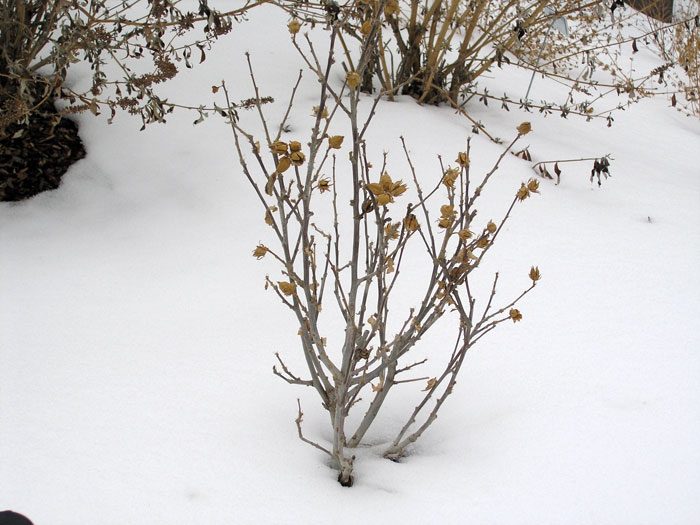

But what if you are growing Syrian (garden) hibiscus? When cultivated in middle latitudes, the bush must be covered for the winter, especially if you have a terry variety. In regions with very cold climates for the winter, the bush can be removed from the ground, placed in a large pot or container and removed to any cool room (for example, in a basement), where it will stay until spring. Then it is planted again in the garden.
If your plant hibernates in the open field, then in 2-3 ten days of November, after the air temperature stays at a level from minus 5 to minus 10 degrees, a frame must be made around the bush, spunbond, lutrasil or agrotex is pulled over it. If in the region where you live, in winter the air temperature does not drop below minus 15 degrees, then nothing threatens the bushes protected in this way. Instead of a covering material that does not allow air to pass through well, which can cause the plant to rot, it is better to use spruce branches, which are able to accumulate snow on themselves and prevent the hibiscus from overheating or rotting. To begin with, tie the bush with a rope, and put a sack bag on top of it, and then put spruce branches in 3 layers, like a hut. But it should be borne in mind that a rodent can climb into such a structure, which will gnaw the bark on the plant, and it will die. To protect the bush from such a pest, you need to put mousetraps or baits near it (wheat poisoned with poison from rodents).
Types and varieties of Syrian hibiscus with a photo
As mentioned above, Syrian hibiscus, as well as its varieties, are most often cultivated in the garden. But other types of such plants and their various varieties are grown in the open field.
Syrian hibiscus (Hibiscus syriacus)
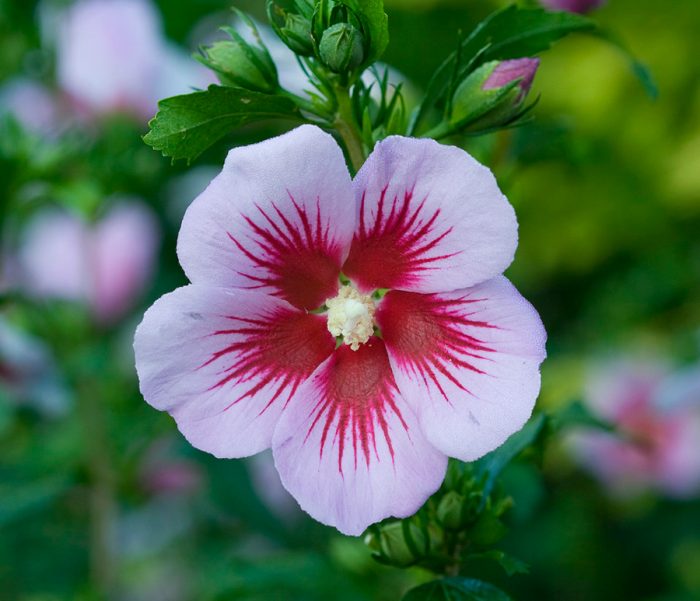

The homeland of such a plant is not Syria, but China. Under natural conditions, this species is a deciduous shrub, which can reach a height of 5-6 meters. The shape of the rich green leaf plates is ovoid, and their length is up to 10 centimeters. During flowering, single flowers bloom, which can be painted in different colors. Gardeners cultivate hibiscus with both simple and double flowers, while the shape of the plant is both standard and bush. The best varieties:


- Diana… The height of the shrub is about 200 cm. White flowers reach 12 centimeters in diameter, the edge of their petals is wavy.
- Vayelith Ilar Double… This upright powerful shrub is decorated with semi-double or double flowers of a bluish-purple color with red spots in the middle.
- Pink Giant… Pink single flowers have a purple spot at the base.
- Carneus Plenus… The stems of such a shrub are very flexible. Double flowers of a pale pink shade are decorated with a crimson speck located in the middle.
Hibiscus trifoliate (Hibiscus trionum)
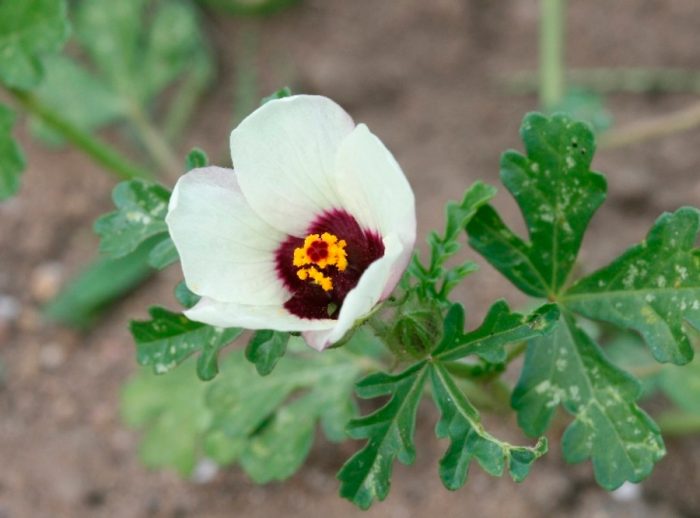

The homeland of this species is North and Central Africa. However, today it is widely cultivated in all areas of irrigated agriculture. Hibiscus has a taproot, as well as a branched straight stem, the height of which is about 0,8 m. On the surface of the alternately located tripartite leaf plates, there is pubescence, they also have a petiole. The pale yellow flowers reach about 40 mm in diameter, with a dark red center. This species has one characteristic feature: its flowers open in the morning, and close in the afternoon. The flowering period of such a plant is more than 30 days. The fact is that new buds are formed in the axils of each leaf plate, and if the bush grows in favorable conditions, then the formation of flowers will occur every day.
Hybrid hibiscus (Hibiscus hybrida)
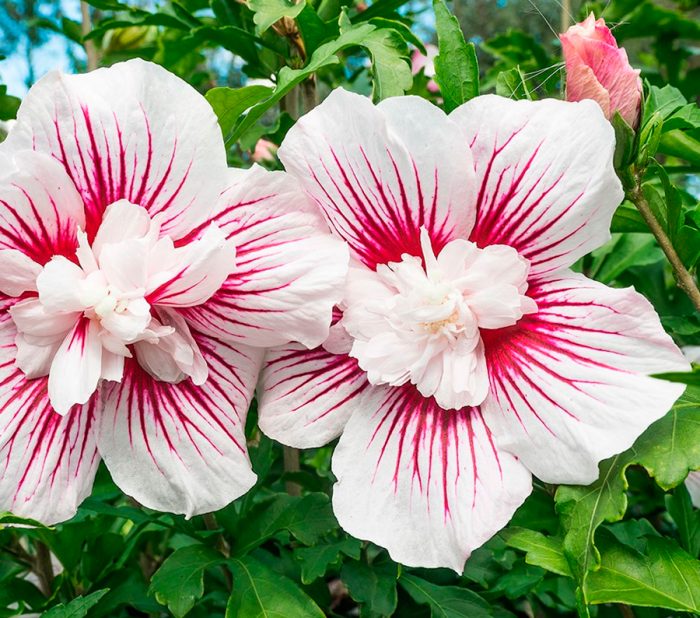

In addition to these species, which can be found in the garden and in natural conditions, gardeners also cultivate hybrid hibiscus, as well as its varieties. It was already mentioned above that breeders obtained this plant by crossing 3 North American species, namely: bright red, armed (holly) and marsh hibiscus. Hybrid hibiscus are herbaceous perennial plants that produce very large and beautiful flowers during flowering. Popular varieties:
- Youth… The height of the weakly branched plant is about 150 cm. The stems are painted in a pale greenish-yellow color, the shoots depart from them at an angle of 60 degrees. Three-cut or five-cut sheet plates are colored greenish-yellow. In pink flowers, the bowl and bottom are white, they reach up to 100 mm in diameter and have the shape of a tulip.
- Late… Such a compact, densely leafy bush reaches a height and diameter of about 100 cm. The shape of leaf plates with a serrated edge is oval-arrow-shaped, their petioles are thick, and the veins are light in color. Pinkish-crimson flowers with a lilac tint have the shape of narrow bells, in diameter they reach 70 mm. Flowers are formed on thick short peduncles.
- Pale pink… The height of the herbaceous bush is about 1,7 m, short shoots extend from the stems at an angle of 60 degrees. The foliage is three-cut, it has a greenish-yellow color. Pink tulip-shaped flowers reach about 12 centimeters in diameter, their bowl and bottom are white.
- Pink-porcelain… The height of the bush with greenish-yellow branched stems is about 1,3 m. The middle lobe of deeply incised leaf plates is wide and protruding, they are painted in a dusty greenish-yellow color, and their petioles reach 60 mm in length. On short peduncles, large pinkish bell-shaped flowers with a barely distinguishable yellowish tinge sit in bundles, they reach about 12 centimeters in diameter.
Hibiscus – the flower of death
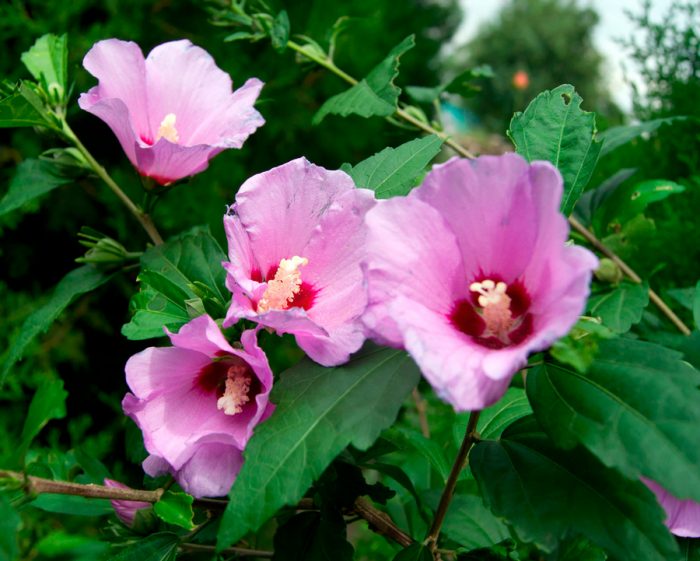

There are superstitions associated with hibiscus, which claim that such a flower can bring only misfortune to its owner, and also that when it blooms, soon someone close to its owner dies. However, all these superstitions are associated with the Chinese hibiscus, or the Chinese rose. Not a single sign has yet been invented about the hibiscus grown in the garden, so you can safely grow it on your site.
